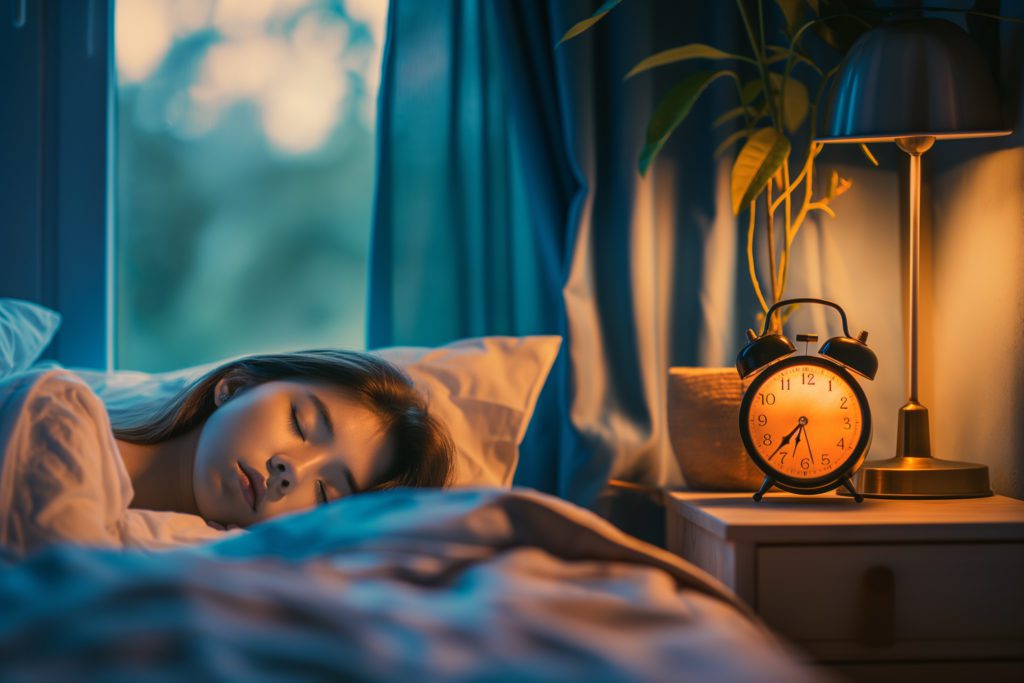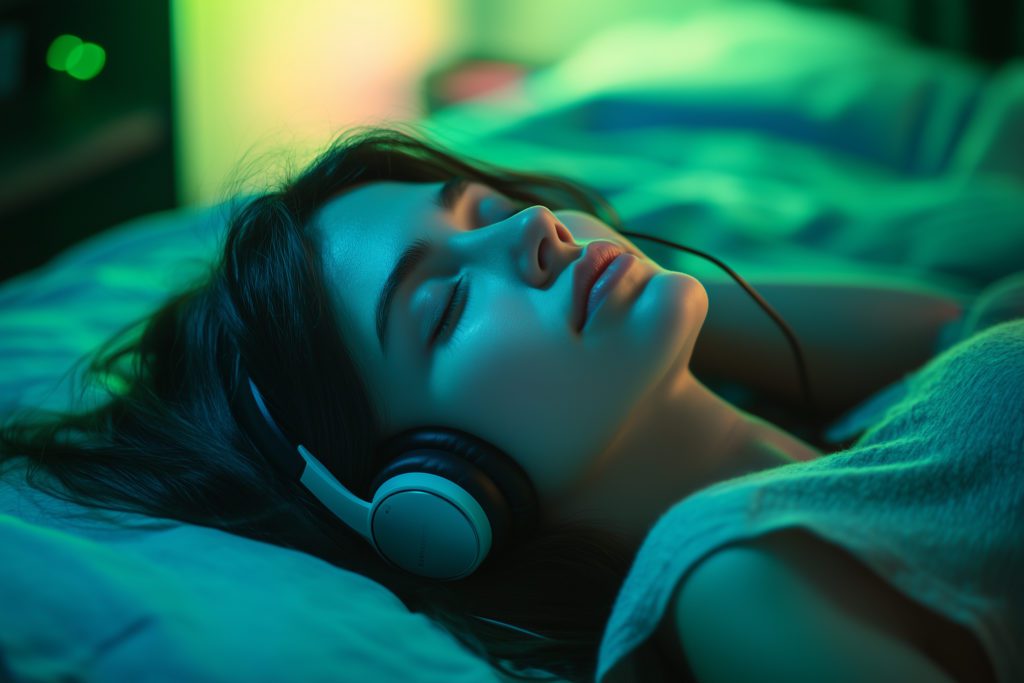
Yoga and Circadian Rhythms
Reset your internal clock with yoga! Discover how yoga can balance your circadian rhythms for better sleep, energy, and well-being—no more sleepless nights!

Our bodies are like finely tuned clocks, but we often throw those internal clocks completely off with life's chaos—work deadlines, binge-watching shows, or even a midnight snack.
Circadian rhythms are the natural cycles that tell our bodies when to sleep, wake, and eat. It manages your daily schedule—except sometimes it needs a little help staying on track. Surprisingly, that extra help can also come from yoga.
Practicing yoga isn't just for bending your body; it can actually help regulate these rhythms. Yoga can synchronize your body's internal clock, helping you wake up feeling refreshed and ready to conquer the day.
In this article, we'll discuss how yoga and circadian rhythms are deeply connected and how you can harness this relationship to boost your overall well-being.
What Are Circadian Rhythms?
Circadian rhythms are the 24-hour cycles that govern a variety of bodily functions—sleep, digestion, and even mood. Your body is a creature of habit, and these rhythms help keep things running smoothly. They are heavily influenced by environmental cues like light and temperature, which is why you're more likely to feel sleepy when it's dark and alert when the sun is shining.
Our internal clock is managed by a part of the brain called the suprachiasmatic nucleus (SCN). The SCN responds to light exposure, signaling to the body when it's time to be awake or to wind down. When these rhythms are in balance, everything from sleep to metabolism functions well.
However, the modern lifestyle—with its constant screen time and irregular schedules—can throw our circadian rhythms out of whack. You may have noticed this after a late-night Netflix binge or working a night shift. Therefore, understanding circadian rhythms is crucial for grasping how yoga can play a role in helping you feel like your best self every day.
How Yoga Supports Circadian Rhythms?
Yoga doesn't just stretch your hamstrings—it stretches your ability to handle stress and maintain balance in your life. One of yoga's biggest gifts is its impact on the nervous system. Yoga helps activate the parasympathetic nervous system, often referred to as the "rest and digest" system. This is key because the parasympathetic system helps regulate the body's natural cycles, including sleep.
Pranayama
Breathing exercises (pranayama) are another potent tool yoga offers to reset circadian rhythms. Focused, deep breathing calms the mind and lowers cortisol levels. Studies have shown that pranayama can improve sleep quality and even help treat insomnia.
Asanas
Then there's the physical practice itself—yoga postures (asanas). Some poses are particularly effective for promoting relaxation and helping your body transition into a more restful state. Yoga also promotes circulation and relaxes the mind, making it perfect before bedtime.
Mindful Meditation
Let's not forget about yoga's best-kept secret: mindfulness and meditation. By incorporating mindfulness practices into your routine, you can reduce anxiety and help train your brain to relax at appropriate times. Research suggests that meditation increases melatonin production, which is crucial for maintaining healthy circadian rhythms.
Yoga and circadian rhythms go hand in hand. Whether you're doing Sun Salutations in the morning or practicing deep relaxation in the evening, yoga can help align your internal clock, leading to better sleep, more energy, and improved overall well-being.
Scientific Evidence Supporting Yoga and Circadian Rhythms
There's a growing body of scientific research that supports the connection between yoga and circadian rhythms. Numerous studies have shown that regular yoga practice can improve sleep quality, reduce stress, and help align our internal clocks.
Improved Sleep Quality
A study published in the BMC Psychiatry found that practicing yoga daily for just eight weeks significantly improved the participants' sleep quality and duration. The study highlighted how the physical postures, breathing exercises, and relaxation techniques in yoga helped regulate the sleep-wake cycle, reducing insomnia and other sleep disturbances.
Increased Melatonin Production
Another interesting piece of research from the Journal of Alternative and Complementary Medicine explored how yoga influences melatonin production. Melatonin, often called the "sleep hormone," plays a crucial role in regulating circadian rhythms.
The study found that participants who practiced yoga and meditation regularly had higher levels of melatonin production compared to those who did not. Higher melatonin levels help signal the body to wind down and prepare for sleep, reinforcing the importance of yoga in promoting healthy sleep patterns.
Reduced Cortisol Levels
A study in the Journal of the International Society of Preventive & Community Dentistry showed that yoga helped decrease cortisol levels—the primary stress hormone—leading to a more relaxed state, which is crucial for maintaining a stable circadian rhythm.
These studies provide strong evidence that yoga is a powerful tool for supporting your body's natural rhythms and improving overall sleep health.
Best Yoga Practices to Align with Your Circadian Rhythms
Now that we know yoga can help regulate circadian rhythms, let's get into the fun part: figuring out which yoga practices work best at different times of the day. Just like your body goes through phases of alertness and rest, your yoga practice can be tailored to support these natural fluctuations.
Morning
In the morning, when your body is naturally waking up, it's time to energize! A dynamic practice like Sun Salutations is perfect for getting the blood flowing and aligning your energy with the day's rhythms. Not only does this sequence stretch out stiff muscles, but it also boosts circulation, helping you shake off any lingering sleepiness.
Afternoon
Around mid-afternoon, it's common to hit an energy slump. Instead of reaching for caffeine, try a gentle yoga sequence with grounding postures like Forward Folds or Seated Twists. These poses help clear the mental fog and bring your energy back to a balanced level. A short meditation session can also help to restore focus and calm.
Evening
In the evening, it's all about winding down and preparing for rest. Restorative yoga poses, like Child's Pose and Legs Up the Wall, are perfect for easing tension in the body and calming the nervous system.
The Takeaway
By syncing yoga practices with your body's natural cycles—energizing in the morning, balancing in the afternoon, and winding down at night—you can better manage your sleep-wake cycle and feel more refreshed. And the best part? You don't need to be a yoga master to reap the benefits.
FAQ
Can yoga help shift workers regulate their circadian rhythms?
Yes, yoga can help shift workers by reducing stress and improving sleep quality. Breathing techniques and gentle poses can promote relaxation after work, while energizing sequences before shifts boost alertness. Regular practice helps regulate melatonin and cortisol, which influence sleep-wake cycles.
Are there specific yoga styles better suited for circadian rhythm regulation?
Certain yoga styles are better suited for different times of the day. Restorative or Yin Yoga is ideal before bedtime to promote relaxation, while Vinyasa or Ashtanga yoga in the morning can help increase energy and align the body's internal clock. Practicing consistently enhances sleep quality
Does practicing yoga outdoors have a greater impact on circadian rhythms?
Yes, outdoor yoga exposes the body to natural light, which helps regulate the sleep-wake cycle by reinforcing natural melatonin production. Morning sunlight during yoga can improve alertness and set the body's internal clock, while evening practice can aid in winding down naturally.
Are there specific yoga breathing techniques that influence circadian rhythms?
Yes, breathing techniques like Nadi Shodhana (alternate nostril breathing) can balance the nervous system and reduce stress, improving sleep. Bhramari (humming bee breath) helps calm the mind, preparing the body for rest. These techniques promote relaxation and regulate energy levels.
Is meditation a key component of yoga for circadian rhythm regulation?
Yes, meditation is crucial in balancing circadian rhythms by reducing stress and promoting mindfulness. Regular meditation practice before sleep can improve relaxation, while morning meditation can set a positive, energized tone for the day.

Written by
Dr Aqsa
As a Medical Doctor, Dr Aqsa, uses her knowledge to craft complex medical information that is understandable to the general public. For years, she has tried to improve health literacy and empower readers with valuable health knowledge through her articles, blog posts, and educational materials.
Download Pillow
Get help
Press & News
Legal
Connect
X (Twitter)
Company
Copyright © Neybox Digital Ltd.



